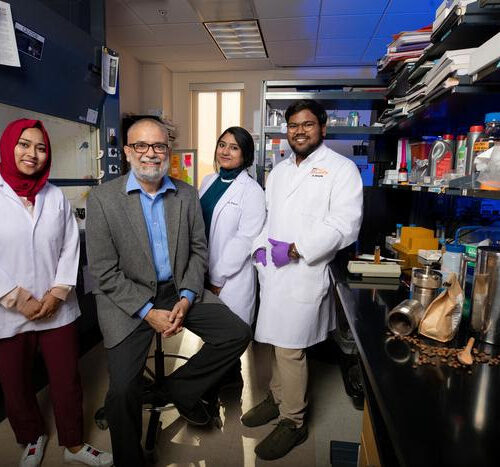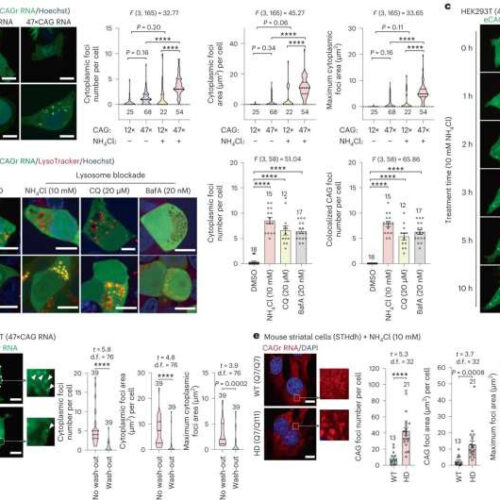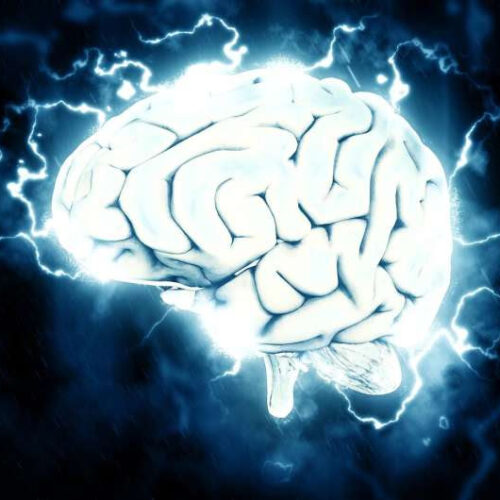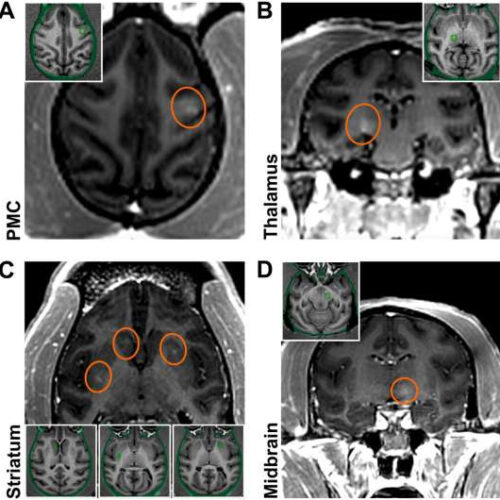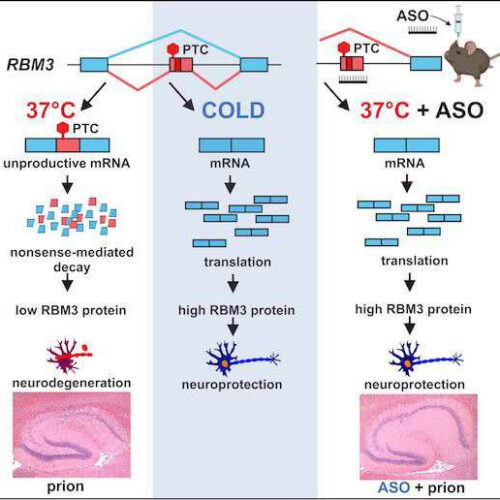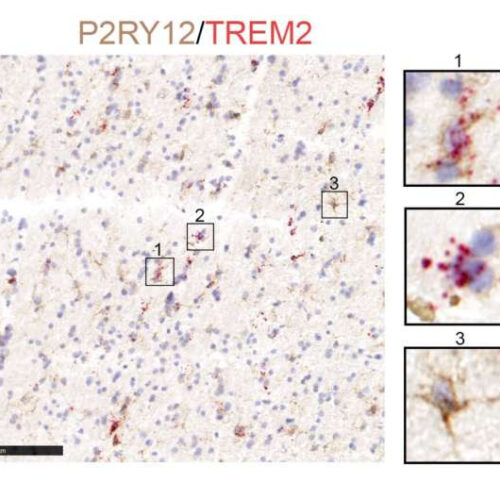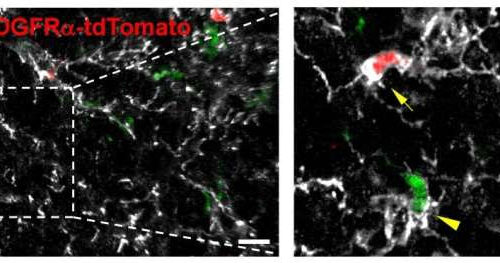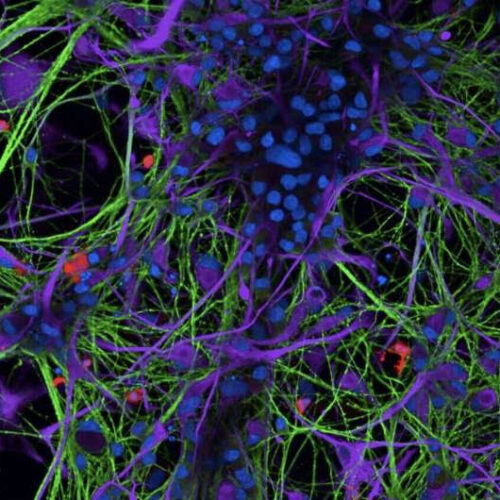by Lisbeth Heilesen, Aarhus University New knowledge about cholesterol contribute to the understanding of the neurodegenerative Niemann-Pick type C disease – also called “childhood Alzheimer’s” Credit: Mikael WinklerUsually, the word “cholesterol” prompts a negative reaction because of its role in cardiovascular disease. While this is true, cholesterol is also vital for cells to function correctly—for...
Tag: <span>Neurodegenerative disease</span>
Coffee grounds may hold key to preventing neurodegenerative diseases
UTEP researchers create therapy that is both economical, sustainable Peer-Reviewed Publication UNIVERSITY OF TEXAS AT EL PASO A TEAM LED BY JYOTISH KUMAR (RIGHT), A DOCTORAL STUDENT IN THE DEPARTMENT OF CHEMISTRY AND BIOCHEMISTRY AT UTEP, AND OVERSEEN BY MAHESH NARAYAN, PH.D. (SECOND FROM LEFT), A PROFESSOR AND FELLOW OF THE ROYAL SOCIETY OF CHEMISTRY...
Study uncovers potential new source of genetic mutations that cause neurodegenerative disease
by University of Plymouth The eCAGr RNA forms cytoplasmic gel-like condensates degraded by the lysosomes. a, Representative images and quantifications of eCAGr RNA condensates (foci) in transfected HEK293T cells expressing the indicated RNA together with MS2CP–YFP as the foci detector. b, Representative images and quantifications of eCAGr RNA foci and the lysosomes in HEK293T cells treated with the...
Q&A: What role does alternative splicing play in neurodegenerative disease?
by Iqbal Pittalwala, University of California – Riverside Credit: Pixabay/CC0 Public Domain Alternative splicing, a clever way a cell generates many different variations of messenger RNAs—single-stranded RNAs involved in protein synthesis—and proteins from the same stretch of DNA, plays an important role in molecular biology. Progressing rapidly, the field of alternative splicing is a complex topic...
Sneaking past the blood-brain barrier to usher in the age of gene therapy for neurodegenerative disease
by Justin Jackson, Medical Xpress Initial BBB openings in NHPs targeting brain regions relevant to PD. Successful BBB openings were demonstrated in two monkeys (M1/M2) by delivery of an MR contrast agent (Gd) that does not normally extravasate in the brain. Openings were achieved in the targeted regions with relative accuracy. (A) Axial contrast-enhanced T1-weighted...
Boosting ‘cold shock’ protein in the brain without cooling protects mice against neurodegenerative disease
by University of Cambridge Alternative splicing coupled to nonsense-mediated decay is revealed to control cold-induced expression of the neuroprotective protein RBM3. Inducing RBM3 by modulating its alternative splicing through ASOs at normothermia is neuroprotective in vivo and has great therapeutic potential. Credit: EMBO Molecular Medicine (2023). DOI: 10.15252/emmm.202217157 Scientists in Cambridge and Berlin have used a form...
Transcriptomic changes in glia linked to specific neurodegenerative diseases
by Kerry Grens, Washington University in St. Louis Immunohistochemistry staining of activated microglia in putamen of an individual with AD (microglia labeled by marker protein P2RY12, brown, and activation indicated by TREM2 transcripts, red). Credit: Guoyan Zhao, Ph.D. Neurodegenerative disorders such as Alzheimer, Parkinson and Huntington disease each cause their own distinct set of symptoms,...
Researchers identify new cell source for microgliosis in neurodegenerative diseases
by Liu Jia, Chinese Academy of Sciences Cspg4+ microglia in Pdgfra:tdTomato double transgenic mice. Immunohistochemical stainingfor NG2 and IBA1 in Pdgfra:tdTomato mice. Scale bar 20 µm. Arrows indicate NG2+/PDGFRα-tdTomato OPC. Arrowheads indicate NG2+/IBA1+ microglia. Credit: Proceedings of the National Academy of Sciences (2023). DOI: 10.1073/pnas.2210643120 In a study published in Proceedings of the National Academy of Sciences, a research team led by...
Study: lipids can cause organelle miscommunication in neurodegenerative disease
TUFTS UNIVERSITY, HEALTH SCIENCES CAMPUS The p97 protein is one of your body’s best garbage disposers. It floats around in your cells looking for signals that a protein is past its shelf life and needs to be trashed. Mutations in this protein have been linked to neurodegenerative diseases, such as ALS and dementia, but p97’s...
Study shows how iron dysregulation might contribute to neurodegenerative diseases
by Ingrid Fadelli, Medical Xpress Immunofluorescent image of human ipsc-derived tri-culture, containing microglia (red), neurons (green), and astrocytes (purple). Nuclei are stained blue. These cultures were used to unravel the role of iron overload and ferroptosis in microglia in neurodegenerative disease. Credit: Ryan et al Past neuroscience research consistently found a link between deviations from the “normal”...

